We make our luminaries from a white stoneware clay which we purchase from a local clay supplier. It is a blend of different clays from large mines around the country, the exact formula of which---- our supplier won't divulge. We receive the clay already mixed (or pugged).
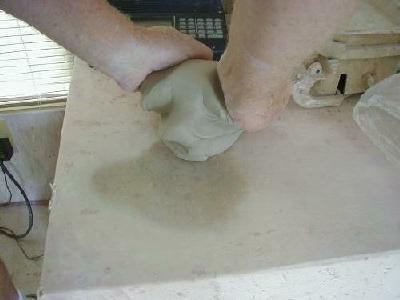 |
1) We start with a lump of white clay, which has to be "wedged" or kneeded to thoroughly mix it and get any air bubbles out of it.
|
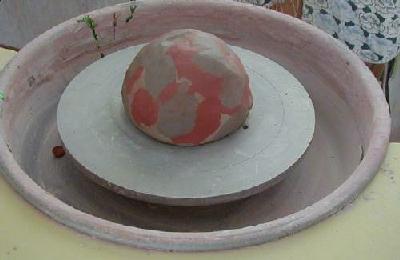 |
2) Once wedged we add the colored clay and slam it into the center of the potters wheel, this makes it stick to the wheel.
|
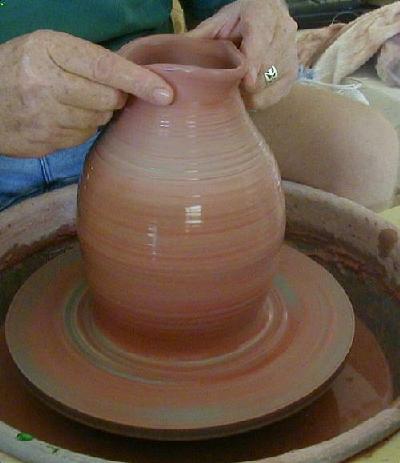 |
3) We form the piece next, this is called "throwing", and is the process where we use our fingers to shape a lump of clay which is spinning on the wheel.
|
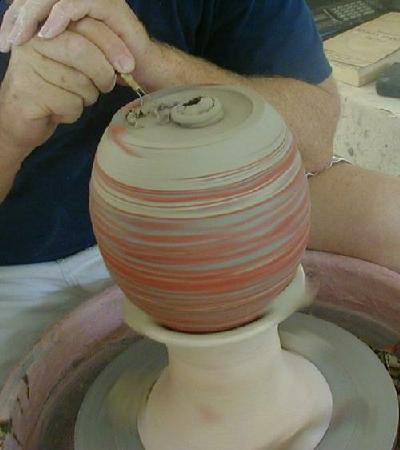 |
4) After 5 or 6 hours, depending on the weather, it dries enough so that it can be handled if done carefully. We call this the leather hard stage. At this time the luminary is mounted onto a clay collar which is called a chuck, it allows us to center the piece up side down on the potters wheel, without damaging the very delicate rim of the bottle shape then we lathe the bottom to give it a "foot".
|
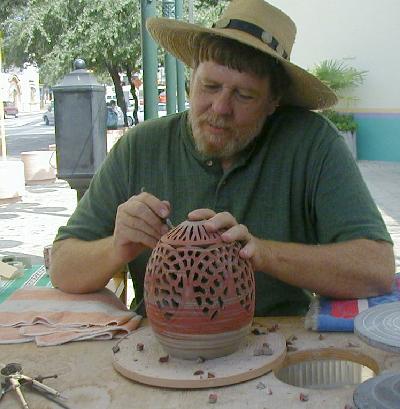 |
5) The next step is the carving of our designs into the clay, using a surgeon's scalpel. Most of our designs are done freehand but we also use a compass for the geometric ones. We call this process the rough-carving.
|
 |
6) We wait till it is completely dry before we do the buffing, and sanding.
|
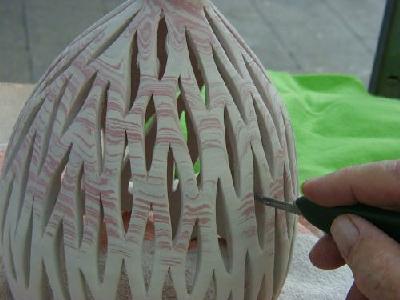 |
7) We use the scalpel one more time to do the fine carving, and cleaning of the design, this stage actually takes longer than the original rough carving.
|
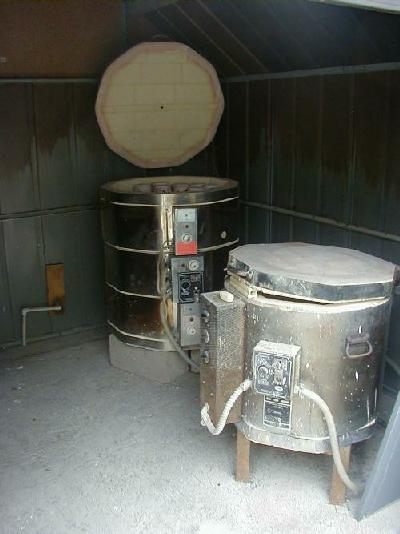 |
8) We fire the luminary next, but not before a final check for any chips or imperfections. The first firing is called a bisque firing and only goes up to 1940 degrees F. or 1060 C. This stabilizes the clay so that it can be glazed and takes about 8 hours to get up to temperature and another 12 hours to cool off enough to unload the kiln.
|
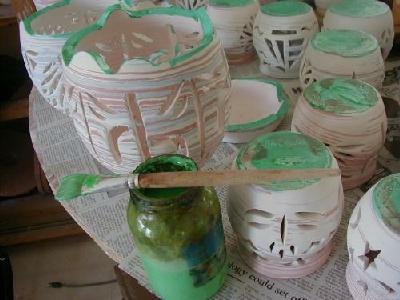 |
9) Once we have all of the luminaries back in the studio we have to wax resist them. This is the process of painting a waxy substance onto all of the surfaces that we don't want the glaze to stick to.
|
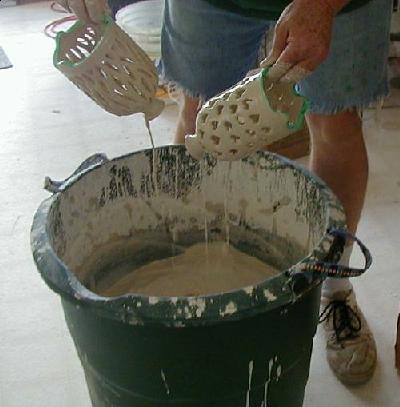 |
10) We now dip each piece into the glaze and after drying we carefully wipe all of the surfaces that we have wax resisted to get the last traces of glaze off.
|
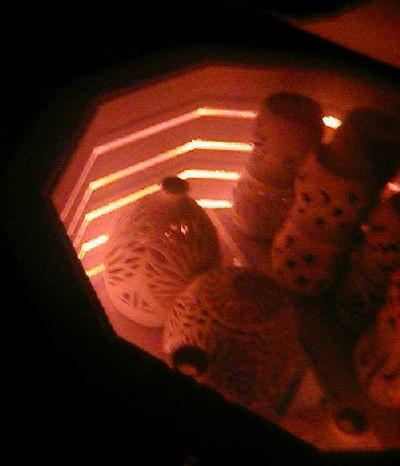 |
11) The final firing goes to cone 6, which is about 2,246 degrees F. or 1250 degrees C. This takes 12 hours to get up to temperature and 12 hours to cool off.
|
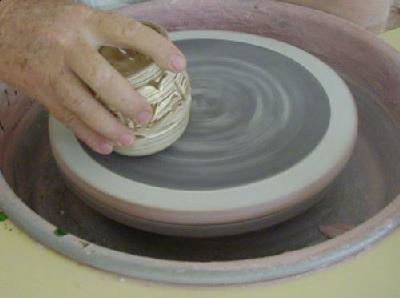 |
12) We still aren't through however, the final step is final fine sanding of the bottom so that it will not scratch your furniture. Then of course everything has to be priced and packed, ready to go to the next art show. The whole process takes a minumum of five days with the drying times and the time spent in firing the work.
|











